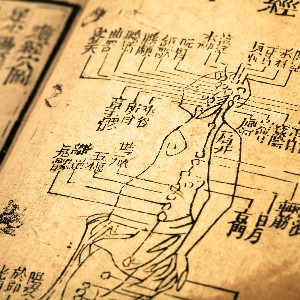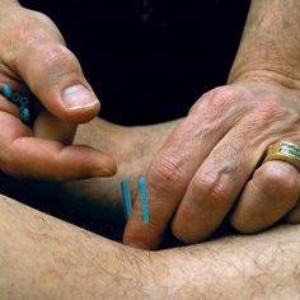Acupuncture is fast becoming a popular method for treating everything from skin conditions to acute and chronic musculoskeletal injuries via the controlling and directing of body energy, or “qi” (pronounced “chee”).
Acupuncture focuses on the principle that there is two-way communication between the skin and all body organs and tissues. Pain and dysfunction can be brought on by stagnation of qi, deficiency of qi, and meridian imbalance from side to side. Meridians are the channels through which qi flows.
By stimulating these points, the progress of the condition can not only be arrested but even reversed. This can help to bring the patient back to normal health. Like Chiropractic, it does not treat any specific symptom or disease. It treats the underlying dysfunction of energy flow, which may be manifesting as your symptoms. Once this is achieved, the body heals itself.
History of Acupuncture
Acupuncture is steeped in a 4,000-5,000-year-old history and had a very peculiar beginning. The original discovery is attributed to battlefield injuries where long-time sufferers of chronic conditions found relief after being wounded in battle due to piercing injuries. Through millennia of trial and error, it has been refined into a very exact science consisting of hundreds of recognized body points and even more on the ear (called “auricular therapy”).
Different styles have emerged throughout the evolution of the profession. Japanese, Chinese, Korean, and Taoist acupuncture are just a few of the specialties. In 1928, Soulie de Morant, a Frenchman with the bank of France, was sent to China and became fascinated with acupuncture.
He took the classical “Pin Yin” names and numbered the points, making them easier to learn. He constructed the current system where points are known by the meridian they belong to and their number along its path. For example, Gall Bladder 21, or “GB-21,” used to be known in Chinese as “Jianjing” and in Japanese as “Kensei.”
Although acupuncture is almost 5,000 years old, it has only been consistently practiced in the United States since the 1970s. It wasn’t until 1997 that the National Institute of Health endorsed the practice of acupuncture. Today, acupuncture is becoming very widespread, with the World Health Organization (WHO) endorsing acupuncture as an effective treatment for a wide gambit of ailments, including:

- Acute bacillary dysentery
- Adverse reactions to radiotherapy and/or chemotherapy
- Allergic rhinitis
- Biliary colic
- Depression
- Essential hypertension
- Headache
- Induction of childbirth and correction of the malposition of fetus
- Inflammation of the tissues surrounding the shoulder
- Leukopenia
- Nausea and vomiting, including morning sickness
- Pain in the epigastrium, face, neck, tennis elbow, lower back, knee during dentistry and after operations.
- Primary dysmenorrhea
- Primary hypotension
- Renal colic
- Rheumatoid arthritis
- Sciatica
- Sprains
- Strokes
Philosophy of Acupuncture
According to Traditional Chinese Medicine and Acupuncture, acupuncture points are situated all over the body on what is known as “meridians.” It is on these meridians that qi, or life energy, flows. The central principle to acupuncture and TCM is the concept of yin and yang and their balance and interplay.
This is represented by the yin-yang symbol, which shows balance and harmony between these opposite forces. However, as represented by the symbol, there is yin within yang and yang within yin. Health is the optimum state of balance between yin and yang.
A disruption in these two components of life energy can result in any number of illnesses. Much like Chiropractic, the treatment of disease is not a direct symptom to treatment idea. Instead, an acupuncturist will treat the underlying disruption of balance in the meridian system, and the body will heal itself.

How Acupuncture Works
Although the exact mechanism of how acupuncture works is still being researched, there are seven theories on how acupuncture works.
Augmentation of Immunity Theory
This theory states that acupuncture raises the levels of antibodies, white blood cells, certain hormones, immunoglobulin, and other chemicals related to the body’s ability to defend itself against foreign invaders through response to the needle insertion into the skin. This theory explains why it has been shown to boost the immune system.
Circulatory Theory
Needling can lead to the constriction or dilation of blood vessels by the body’s release of vasodilators, like histamine. This often results in a red bump at the insertion site. Systemic vascular effects of needle insertion are possible mechanisms for how acupuncture can treat high or low blood pressure.
Neurotransmitter Theory
Acupuncture affects levels of certain neurotransmitters, such as serotonin and norepinephrine, in areas of the brain that control arousal degrees. This can produce calming effects during and after treatment and influence the release of hormones.
Electrical Theory
The body is influenced by and generates electromagnetic fields. The body constantly creates electrical signals through the nervous system that controls cell growth, development, and function. Research has generated evidence showing that the body’s electromagnetic fields and the meridians associated with acupuncture are related. Acupuncture points are often located in low electrical resistance areas, so needling can stimulate the electrical fields of the body and alter neurotransmitters in the body.
Endorphin Theory
This theory explains acupuncture’s analgesic effects. The body naturally produces painkillers called “endorphins” (endogenous morphine). Needling certain points can stimulate the release of endorphins, thereby relieving pain.
Gate Theory
Perhaps the most scientifically accepted theory, Gate Theory, is based on the researchers Ronald Melzack (a Canadian psychologist) and Patrick David Wall (a British physician) in 1962. Their theory states that stimulation of sensory pathways (large fibers) inhibits pain pathways’ activity and reduces the perception of pain.
A chronic lack of sensory stimulation can leave the “gate” open for chronic pain problems. Acupuncture works on the large fibers to prevent the transmission of pain signals. Thus, the “gate” is closed, and pain signals are kept from the brain.
Placebo Theory
Placebo Theory is a popular explanation of why acupuncture works. Much of this theory is based on invisible meridians and does not correspond with any known biological pathways. Every treatment known to man produces some placebo effect as the healing power of the mind is powerful. However, this theory has been disproved by the effective use of acupuncture on babies and animals.
What Our Clients Are Saying:
After almost two years of struggling with infertility and undergoing tests and treatments to no avail, I decided to try acupuncture. I was honestly skeptical about acupuncture, not knowing much about Eastern medicine, but Western medicine had not explained my infertility. I was in the “unexplained” category. My husband and I were willing to try anything to add a little one to our family.
Dr. Zev treated me with acupuncture and Chinese herbs for a little over a month, and I found myself noticing subtle changes in my circulation and overall sense of wellbeing. Still, I tried not to get my hopes up too high. The month after finishing my treatment, I was pregnant. I went on to have a wonderful pregnancy and gave birth to a healthy and sweet little boy. We’re so thankful and always will be!
– H.C.

